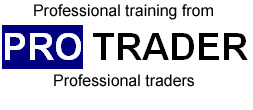We covered the Calmar Ratio in an earlier Blogg and I thought we should also mention the MAR ratio which is another much quoted ratio.
They are very similar ratios in terms of calculation but results can vary widely between them because they use different historical look back periods for the calculation.
They both measure return per unit of risk where risk is defined as the maximum drawdown. There are all sorts of other measure of risk that could be used but maximum drawdown is a simple measure and generally the one that concerns us most. Maximum drawdown is the worst dip from a previous equity high (peak) to the lowest subsequent low (valley). In other words if we start trading at precisely the worst point possible on the historical equity curve how much money will we lose before our account starts to turn around.
The MAR ratio is calculated by dividing the compound annual growth rate (CAGR) of a system since inception by its biggest drawdown. Whereas the Calmar ratio typically uses a 36month historical look back.
MAR ratio = (compound rate of return)/ (maximum drawdown)
Calmar ratio = (36 month compound rate of return).( 36 month maximum drawdown)
So MAR is a longer term measure whilst Calmar is just looking at the results over the last 3 years.
Because of the great similarities many people believe the name MAR is some derivation from the CalMAR ratio (covered in an earlier Blogg) however the name is actually derived from the developers of the ratio the Managed Accounts Newsletter.
Clearly if we used a 36 month look back in both calculations then the two ratios would be identical.
So which is better ? Well it all depends on your time horizon. If you have a very long term time horizon then probably MAR is the best to use whereas if you are more of the sort of person who tends to ask “what have you done for me lately “ then Calmar would be more suitable.
For the sort of short term automated algorithmic trading that we do then clearly we are much more interested in the shorter term results and ratios than the very long term.
There is of course no reason why we cannot adjust the look back to suit our own requirements. I tend to pay more attention to results over the last couple of years so often I will use a 24 month look back when comparing system performance. I would still be demanding adequate performance over much longer periods as well but certainly want my automated day trading systems to be firing on all cylinders over the last couple of years.

